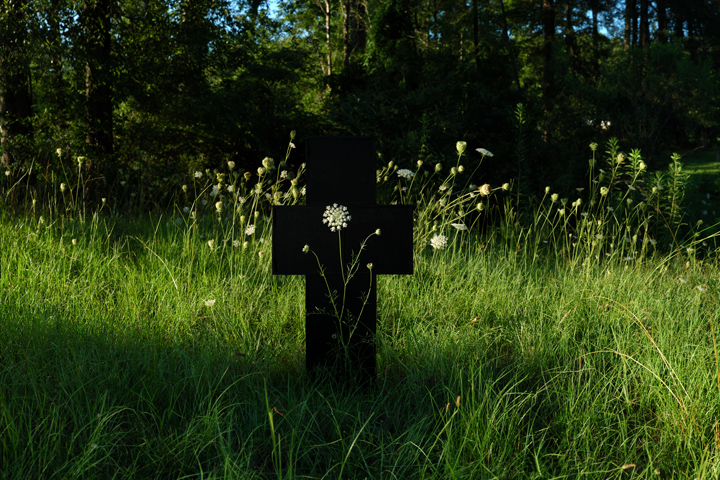September 24, 2010
The Coleman Center for the Arts is pleased to present J.W. Fike’s Photographic Survey of Edible Botanicals of York, Alabama. The show will be on display in the Coleman Center for the Arts gallery from September 24th to December 6th, and an opening reception will take place on Friday, September 24th from 6 to 8 pm. The reception will be catered by Erin McGahey featuring locally grown food. The event is free and open to the public and all are welcome!
J.W. Fike’s Photographic Survey of Edible Botanicals of York, Alabama features images and mapping of wild edible plants from around town, and was created during Fike’s recent residency at the Coleman Center for the Arts in the summer of 2010. Among Fike’s subjects are familiar Queen Anne’s Lace, also known as wild carrot, Kudzu, Black Berry, and Bamboo, to more unfamiliar plants such Purge Nettle, Blue Vervain, and Jerusalem Artichoke.
Fike uses a portable modular black backdrop to frame the plants in their natural habitats in images that blend scientific and fine art aesthetics. This visual dualism extends to the common perception of the plants, some known as weeds, some known as industrial materials for food or construction, others known as both wild or domesticated plants depending on their cultivation.
Simple investigation of some of the species reveal fascinating histories and potentials. For example, Jerusalem Artichoke can be grown for human consumption, alcohol production, fructose production and livestock feed. It was first harvested by Native American tribes, and then spread through Europe after explorer Champlain introduced them in France in 1605. The origin of the name, Jerusalem Artichoke, is unknown, though the plant is neither from Jerusalem nor is it an artichoke. Several theories about the plant’s name exist. The name likely originated from Europe and was re-anglicized in America, the plant’s country of origin. A root vegetable that spawned an agricultural pyramid scheme in the 1980s, the plant reflects the history of American settlement.
Fike’s work urges us to look again at these plants as local resources, and emphasizes issues of sustainability while utilizing community knowledge and resources. The photographs themselves give weight to each plant and it’s surroundings. Their beauty, utility, and importance are undeniable.
This program is made possible by funding from the American Recovery and Reinvestment Act, the Andy Warhol Foundation for the Visual Arts, the Alabama State Council on the Arts, the National Endowment for the Arts, and the generous contributions of individual supporters.
For more information please contact the Coleman Center for the Arts at (205) 392-2005, colemancenter@gmail.com.
About the Artist
Originally from Birmingham, Alabama Jim Fike holds a B.A. from Auburn University and an M.F.A. from the Cranbrook Academy of Art. His work has been shown at venues across the United States. He is currently a Visiting Professor of Interdisciplinary Art at Estrella Mountain College in Avondale, Arizona

